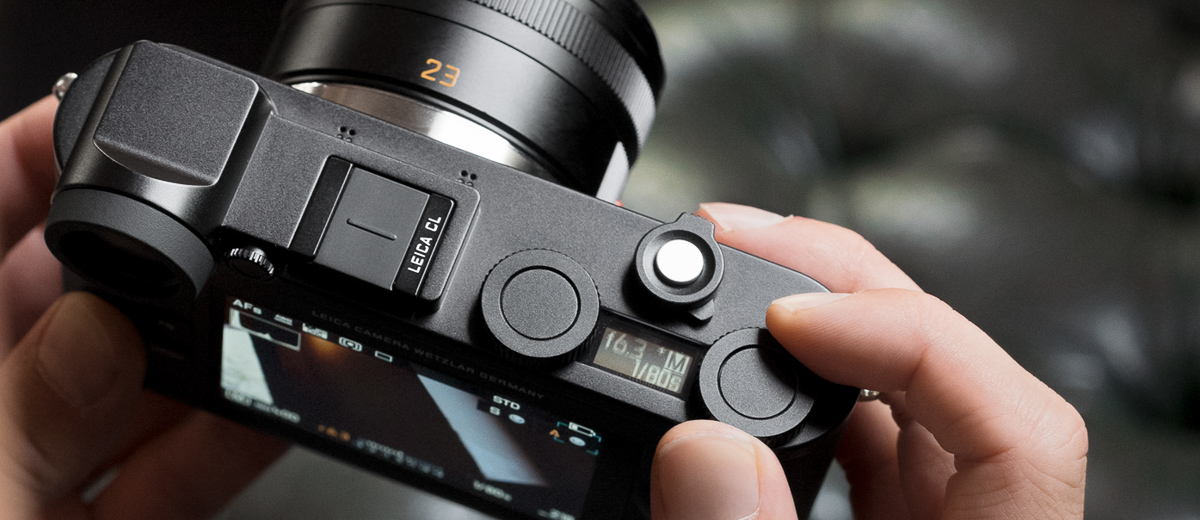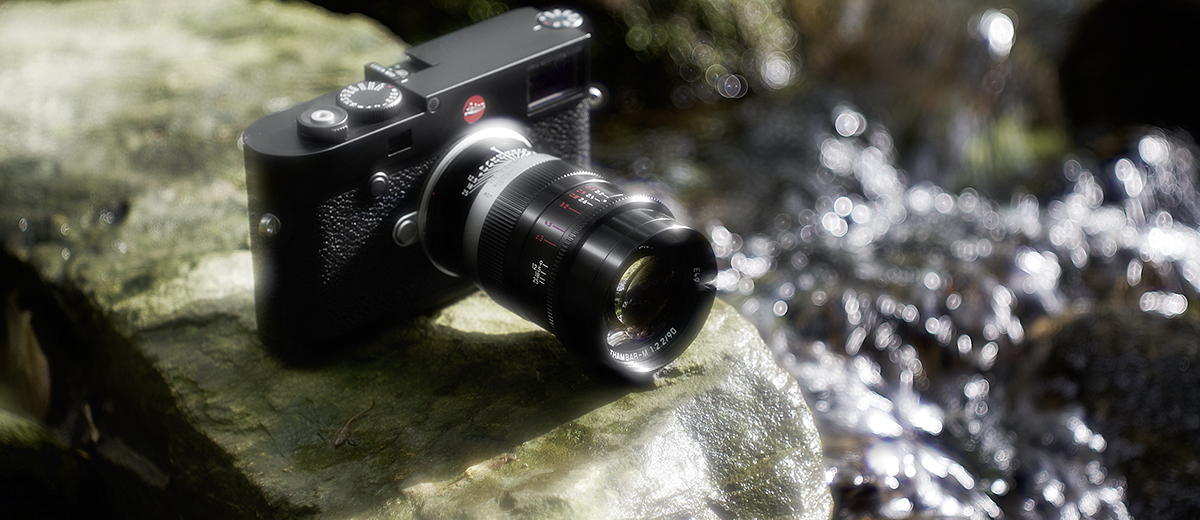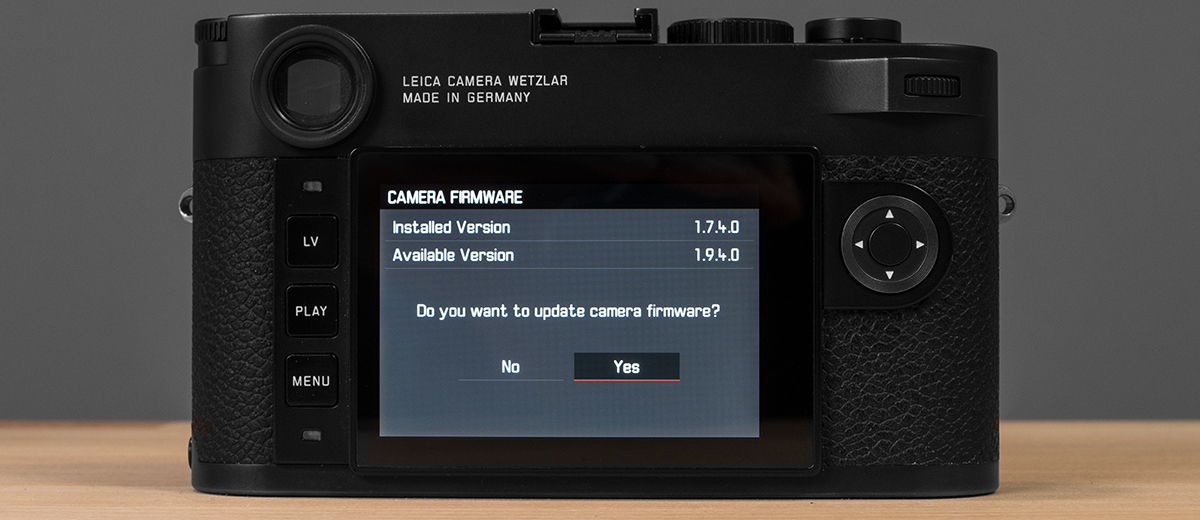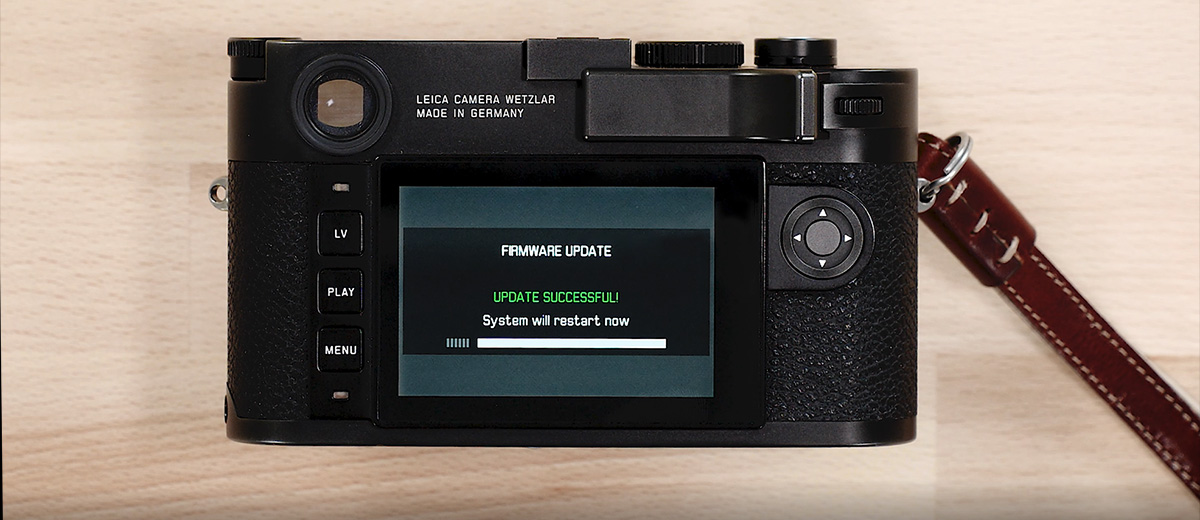-
David Farkas wrote a new post, Firmware Ver 1.2 for Leica TL2 Released 7 years ago
Today, Leica has released updated firmware for the Leica TL2. The new firmware adds support for the newly introduced Elmarit-TL 18mm f/2.8 ASPH pancake lens. You can read more about the new lens here:
Leica […]

-
David Farkas wrote a new post, Leica Updates Sensor Corrosion Upgrade Pricing 7 years ago
Leica has updated their pricing on the CCD Sensor Corrosion Upgrade Program. The main changes here are increases to the upgrade cost to the M (Typ 240), M-P (Typ 240) and the M Monochrom (Typ 246). There are no […]

-
David Farkas wrote a new post, Leica Elmarit-TL 18mm f/2.8 ASPH Pancake Lens Announced 7 years ago
Today, in addition to the Leica CL announcement, Leica has also introduced a new TL lens – the Leica Elmarit-TL 18mm f/2.8 ASPH, in both black and silver. This APS-C sized lens in Leica's new L mount, sets new […]

-
David Farkas wrote a new post, Leica CL Mirrorless Camera Introduced 7 years ago
Today, Leica has expanded their APS-C offerings with a new interchangeable lens mirroless system camera – the Leica CL. With similar specifications to the recently launched Leica TL2, the CL trades in the pure m […]

-
David Farkas wrote a new post, Leica Announces M-P (Typ 240) “Canada Edition” 8 years ago
Today, Leica Camera has announced a limited edition Leica M-P (Typ 240) Set to commemorate the Canada's 150th Anniversary of Confederation. The Leica M-P (Typ 240) “CANADA EDITION” Set includes a custom engraved […]

-
David Farkas wrote a new post, Leica Q (Typ 116) Silver Anodized Announced 8 years ago
Today, Leica Camera has announced that it will now offer the popular Leica Q (Typ 116) 24MP full frame compact camera in a silver anodized finish. The camera is identical in features and specifications to the […]

-
Josh Lehrer wrote a new post, Leica Sofort “LimoLand by Jean Pigozzi” Special Edition Released 8 years ago
Today, Leica Camera has released a special edition of the popular Sofort instant film camera in collaboration with French-Italian artist Jean Pigozzi: the Leica Sofort “LimoLand by Jean Pigozzi”. The camera […]

-
Josh Lehrer wrote a new post, Leica Announces Thambar-M 90mm f/2.2 – A Legend Returns 8 years ago
Today, Leica has announced the new Thambar-M 90mm f/2.2 lens for the Leica M-System. Much like the Summaron-M 28mm f/5.6 re-issue last year, the Thambar-M 90mm f/2.2 features a similar optical design to the […]

-
David Farkas wrote a new post, Leica C Image Shuttle App for Compact Cameras Not Compatible with iOS11 8 years ago
Just got word that the Leica C Image Shuttle App for iPhone and iPad will not be compatible with the soon-to-be-released iOS11. Apple is rolling out iOS11 along with the iPhone X, 8 and 8 Plus, which […]

-
David Farkas wrote a new post, Leica Introduces V-Lux (Typ 114) Explorer Kit 8 years ago
Today, Leica has introduced the V-Lux (Typ 114) Explorer Kit. The new bundle includes a stock V-Lux (Typ 114), a black nylon ‘ONA for Leica' Bowery camera bag and a Leica Rope Strap by COOPH in red. Earlier this […]

-
Josh Lehrer wrote a new post, New Trade-Up Program for Leica S (Typ 007) 8 years ago
Today, Leica has announced a new program allowing users of previous-generation Leica S-system cameras, or other medium format digital systems, to trade in those cameras towards the current Leica S (Typ 007). The […]

-
David Farkas wrote a new post, Leica Fixes TL2 EVF Issue with Firmware 1.1 8 years ago
Leica has just released updated firmware for the newly launched TL2. After the first batch of cameras shipped a couple weeks ago, some early users reported their cameras being rendered inoperable. Leica […]

-
Josh Lehrer wrote a new post, Leica Releases Statement Regarding TL2 Issue 8 years ago
Leica just released a statement acknowledging a serious issue with the recently released TL2 camera. In some cases, when using the Visoflex (Typ 020) electronic viewfinder on the TL2, the camera can be ren […]

-
Josh Lehrer wrote a new post, Firmware Ver 1.9.4.0 for Leica M10 Released 8 years ago
After discovering a bug in their most recent M10 firmware release (1.7.4.0), Leica has quickly issued another firmware update for the M10: firmware 1.9.4.0. The new firmware has the same SD card compatibility […]

-
David Farkas wrote a new post, Leica Updates CCD Sensor Corrosion Upgrade Pricing for SL (Typ 601) 8 years ago
In light of the recent price reduction on the Leica SL (Typ 601), Leica USA has just issued an update for the CCD Sensor Corrosion Upgrade program. After the adjustment, upgrading to an SL from a CCD-based M […]

-
David Farkas wrote a new post, Leica TL2 Mirrorless Camera Introduced 8 years ago
Leica has just announced its newest camera, the TL2. When Leica launched the original T (Typ 701) just over three years ago (you can read my review here), it’s machined unibody aluminum design and minimalist to […]

-
David Farkas wrote a new post, Why did Leica drop the price on the SL body? 8 years ago
With such a large price reduction for the Leica SL (Typ 601) mirrorless pro body, many are questioning Leica's motives. An act of desperation to move inventory? A new model around the corner? Is the SL system […]

-
Regarding the price drop in the U.S. serving the goal of providing better global price harmonization (same price in different countries): please note that the European price dropped simultaneously from €6,900 to €5,900.
-
Thanks for the European info. The price drop was still greater, percentage-wise in the US.
-
-
-
Josh Lehrer wrote a new post, Leica SL (Typ 601) Price Reduced to $5,995 8 years ago
Today, in a surprising but welcome move, Leica Camera has reduced the price of the the SL (Typ 601). The popular full-frame mirrorless camera is now $5,995, a $1,455 savings from its original price of $7,450. Th […]

-
I don't think so. The SL was only introduced 18 months ago as a brand new system, and the lens line is still being developed. The Q is six months older and shows no signs of being replaced. Fact is, Leica's product cycles are longer now. Four years passed between the M240 and the M10. And, in many ways, the SL is still more advanced than the just-launched M10. From an image quality perspective, performance of the SL and the M10 are extremely similar. Leica has also been diligent about rolling out regular firmware updates for the SL to continually improve the performance and user experience. Bottom line: this is not an end of life product. Rather, it is Leica's current standard-bearer. Based on other product cycles, I wouldn't expect to see a replacement in anything less than 18-24 months. And a lot of new SL glass will be rolling out in that timeframe, further bolstering the system.
Mainly, I think the price adjustment is aimed at achieving global price harmonization.
-
The SL is doing well, especially for a new system. Leica just wants to accelerate this process and make it more competitive to attract those outside the Leica universe.
To your point about the lens selection, the SL is actually able to accept many more lenses than an M camera. These are:
- SL autofocus native lenses, which are some of the very best optics Leica is offering right now
- TL autofocus lenses, which only cover APS-C, but are perfect for 4K video projects
- S autofocus lenses with adapter
- R lenses with adapter
- M lenses with adapter
- PL mount cine lenses with adapter
- Nikon AF and MF lenses with adapter
- Canon AF lenses with adapter
So, quite a few lenses. By my rough count, more than 300 options.
As far as being outdated in two years time, take a look at the M9. The M9 was introduced eight years ago and has an very loyal following, still producing incredible images. Digital cameras don't get worse with age. They produce the same quality as they did they day they were manufactured. The SL is extremely quick in operation. I can't see myself needing anything faster than 11 fps. Heck, I only use single shot. At 24 megapixels, the files are large enough to produce stunning 30×40 inch prints. It shoots in low light up to ISO 6,400 with extraordinary quality. And, the 4.4 MP EVF rivals an optical finder. So, for me, I'd say the investment in an SL is much more than a two-year deal. I shot plenty of film before reluctantly transitioning to digital just a little more than 10 years ago. And while film has a certain look and nostalgia for me, I can't see going back. The quality and flexibility of the SL is so far beyond what I ever was able to achieve with film.
-
-
David Farkas wrote a new post, Video: How to Update Firmware on the Leica M10 8 years ago
We just posted a short how-to video walking through the firmware update process step-by-step for the Leica M10. This four minute video should hopefully answer some of the most common questions we get related to […]

-
Josh Lehrer wrote a new post, Firmware Ver 1.7.4.0 for Leica M10 Released 8 years ago
Today, Leica has released a firmware update for their newest digital rangefinder: the Leica M10. Firmware version 1.7.4.0 is the second update since the camera's release in mid-January 2017 and improves the M10's […]

- Load More

Carlos,
The Q, with its 24MP full frame sensor will give a little better quality than the CL with an APS-C sensor. Both are going to deliver great results. The Q for me is a mini M camera where I can't take the lens off. Even two years on, it still is best in class.
Really, the decision comes down to one important criteria. If you are looking to get into a full system camera with interchangeable lenses, the CL would be the way to go. But, if you're happy with 28mm, the Q is tough to beat.
18mm is the actual focal length of the lens. On APS-C, it will be equivalent to a 28mm in full-frame terms.
Hope this helps.
Antonio,
The 18-56 TL is extremely capable, with excellent image quality and a nice focal length range. I do find myself gravitating to the 23, 35 and 60 primes more and more, though. The wider apertures and DOF control overrule flexibility for me. So, not a straight-up sacrifice in IQ. Rather a difference in overall look. And, no, I haven't ran into situations with the original T, TL2 or CL where I needed image stabilization.
David, I liked your video but didn't see a link here?